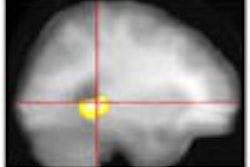Tumor-targeting technology has become one of medicine's most exciting research and development fields, with potential for both diagnostic and therapeutic agents. Once the notion of using monoclonal antibodies to target tumors began appearing in the clinical literature of the 1970s, many companies began working with these agents to address both soft-tissue and solid cancers.
Now a Massachusetts-based biopharmaceutical firm, Peregrine Pharmaceuticals, has begun developing monoclonal antibody technology for several new therapeutic applications. Along the way, it found that some of the products may have diagnostic potential as well.
Peregrine has two agents in clinical trials: Oncolym, a monoclonal antibody for non-Hodgkin’s lymphoma, and Cotara, one of the company’s tumor necrosis therapy (TNT) products under development for treatment of solid cancers. Oncolym is in phase I trials, while Cotara is in phase II clinical trials for brain cancer at seven sites. Peregrine plans to begin a phase III trial in the U.S. late this year for the product. Cotara is also in phase I trials at Stanford University in California for colorectal cancer and at the Mayo Clinic in Rochester, MN, for liver cancer.
Founded in 1981 as Techniclone, the company became Peregrine in 2000. Originally established with a focus on diagnostic agents, the firm switched its emphasis to therapeutic products in the mid-1980s. Now, although therapeutics are where Peregrine is putting its primary energy, diagnostics have come back into the picture, according to Dr. Terrence Chew, vice president of clinical and regulatory affairs.
"We’re looking particularly at our tumor necrosis therapy products as potential diagnostic agents," Chew said. "We’ve done early developmental work with one of our partners in Switzerland, Paul Scherrer Institut (PSI), and are interested in developing these agents. We’ll choose one of the products from that family that seems to have the most promise."
The company believes that one of the key differences between Cotara and other cancer therapeutics on the market is that it may be effective in treating and imaging cancers that are resistant to conventional therapies, or hard-to-treat such as malignancies of the brain. Cotara and other TNT products under development target the dead cells a tumor produces as it outgrows its blood supply, rather than its living cells.
Since all solid tumors develop a core of dead or dying cells, the potential for a single agent being effective on a wide variety of tumor types increases. Once the tumor’s core has been targeted, the therapeutic agent kills the living cells that spread from this core.
In addition to Oncolym and Cotara, Peregrine is developing what it calls collateral targeting agents. These include the TNT family of products, as well as two more technologies, vascular targeting agents (VTAs), which attach to tumor blood vessels and create clots that kill tumors, and vasopermeation enhancement agents (VEAs), which increase the permeability of tumors, enhancing the delivery of chemotherapeutic agents. Peregrine is working on the VTA technology with its Boston- and Stockholm-based partner Oxigene under a joint venture between the firms, Arcus Therapeutics, which was established last year.
Although Peregrine has begun its diagnostic agent R&D with Cotara and the TNT family of products, it is also interested in exploring the diagnostic potential of its vascular targeting agents, which could become the company’s second-generation product line.
"Some of the clinical data we’ve collected from our therapeutic isotopes have produced very nice images, so we thought we should pursue [diagnostic research]," said Steve King, vice president of technology and product development at Peregrine. "We see potential to use some of these agents in conjunction with chemotherapy as diagnostic tracking products, as well as to help identify lesions that are hard to detect with other imaging agents. By targeting the imaging agent to the tumor itself, we hope to get better resolution of the tumor."
By Kate Madden YeeAuntMinnie.com contributing writer
September 19, 2001
Copyright © 2001 AuntMinnie.com
Related Reading
New MoAb radiotracer could simplify PE diagnosis, May 25, 2001




















